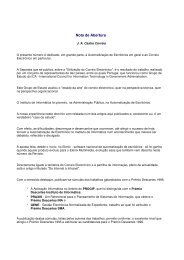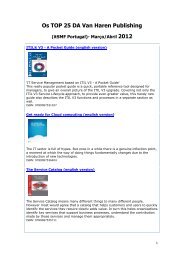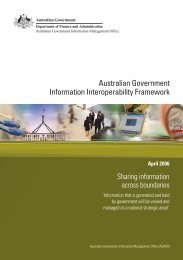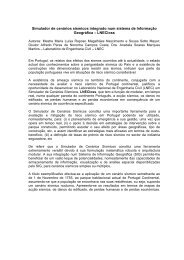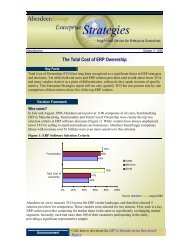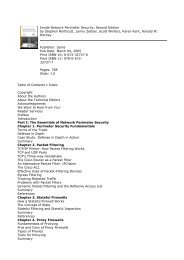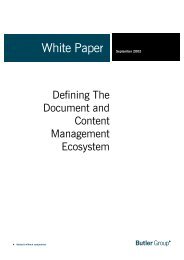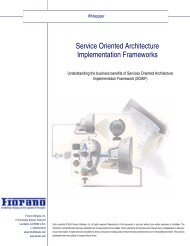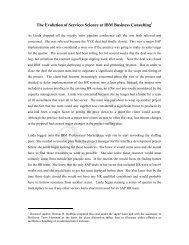OECD Peer Review of E-Government in Denmark - ePractice.eu
OECD Peer Review of E-Government in Denmark - ePractice.eu
OECD Peer Review of E-Government in Denmark - ePractice.eu
You also want an ePaper? Increase the reach of your titles
YUMPU automatically turns print PDFs into web optimized ePapers that Google loves.
The strategy notes that <strong>Denmark</strong> is <strong>in</strong> a good position to develop e-government, hav<strong>in</strong>g a<br />
well-developed “network society”, high levels <strong>of</strong> Internet usage and a well-developed ICT<br />
<strong>in</strong>frastructure <strong>in</strong> place <strong>in</strong> the public sector. It warns, however, that the Danish public sector does not<br />
yet adequately meet the needs <strong>of</strong> citizens, and that more focused effort is required to make sure that<br />
the benefits <strong>of</strong> e-government are fully realised.<br />
The current version <strong>of</strong> the strategy is widely seen as an improvement on its predecessor,<br />
provid<strong>in</strong>g clearer goals for organisations to pursue. The strategy does <strong>in</strong>clude measures for all <strong>of</strong> its<br />
goals that are used not only to evaluate progress aga<strong>in</strong>st the strategy, but also to <strong>in</strong>form its ongo<strong>in</strong>g<br />
development. Progress is reported to the Jo<strong>in</strong>t Board each time it meets, and annually to the<br />
Parliament.<br />
In <strong>in</strong>terviews organisations reported that they can f<strong>in</strong>d it difficult to evaluate whether their<br />
achievements are satisfactory. The majority <strong>of</strong> the measures set out <strong>in</strong> the strategy rely upon survey<br />
data collected by Statistics <strong>Denmark</strong>. This reliance upon organisations’ self-reported progress aga<strong>in</strong>st<br />
the goals <strong>of</strong> the e-government strategy does not appear adequate for form<strong>in</strong>g a robust and<br />
<strong>in</strong>dependently validated view <strong>of</strong> whether these goals are, <strong>in</strong> fact, be<strong>in</strong>g adequately achieved.<br />
Alongside the problem <strong>of</strong> the reliability <strong>of</strong> these measurements is a second problem relat<strong>in</strong>g to<br />
specification <strong>of</strong> the measures themselves. For example, the Danish e-government strategy is notable<br />
for establish<strong>in</strong>g an economic goal <strong>of</strong> e-government releas<strong>in</strong>g resources for use elsewhere <strong>in</strong><br />
government. It states that at least 75% <strong>of</strong> digitalisation projects must release resources, and at least<br />
25% should do so to a great extent. However, there is no clarity over what is meant by “release<br />
resources”, and even less about what is meant by “a great extent”. Coupled with the fact that<br />
organisations are left to report their own achievements aga<strong>in</strong>st this goal, the lack <strong>of</strong> specificity <strong>of</strong> the<br />
measures creates the potential for lower performance than is expected by the <strong>Government</strong>, and/or<br />
disputes over the level <strong>of</strong> actual achievements. Despite these problems, <strong>Denmark</strong>’s emphasis on<br />
measurement <strong>of</strong> e-government goals is an important element <strong>of</strong> its e-government successes that could<br />
benefit from further efforts <strong>in</strong> both specification and collection <strong>of</strong> measurement data.<br />
Box 4.1 <strong>Denmark</strong>’s e-government vision and strategic goals<br />
<strong>Denmark</strong> has a well-def<strong>in</strong>ed, clear and comprehensive e-government vision and strategy, which is well known<br />
across government and acts as a driver for e-government implementation at the organisational level.<br />
The vision <strong>of</strong> the current e-government strategy is that “Digitalisation must contribute to the creation <strong>of</strong> an efficient<br />
and coherent public sector with a high quality <strong>of</strong> service, with citizens and bus<strong>in</strong>esses at the centre”. To do this,<br />
the strategy def<strong>in</strong>es five e-government goals (“signposts”), to be achieved by the end <strong>of</strong> 2006:<br />
• The public sector must provide coherent services with citizens and bus<strong>in</strong>esses at the centre.<br />
• E-<strong>Government</strong> must result <strong>in</strong> improved service quality and the release <strong>of</strong> resources.<br />
• The public sector must work and communicate digitally.<br />
• E-<strong>Government</strong> must be based on a coherent and flexible <strong>in</strong>frastructure.<br />
• Public sector managers must lead the way and ensure that their own organisations are capable <strong>of</strong> realis<strong>in</strong>g<br />
the vision.<br />
Implementation <strong>of</strong> the strategy<br />
The goals <strong>of</strong> <strong>Denmark</strong>’s e-government strategy are essentially to be achieved through two<br />
channels – a set <strong>of</strong> high-visibility <strong>in</strong>itiatives designed to achieve the goals that have been set for 2006,<br />
66



